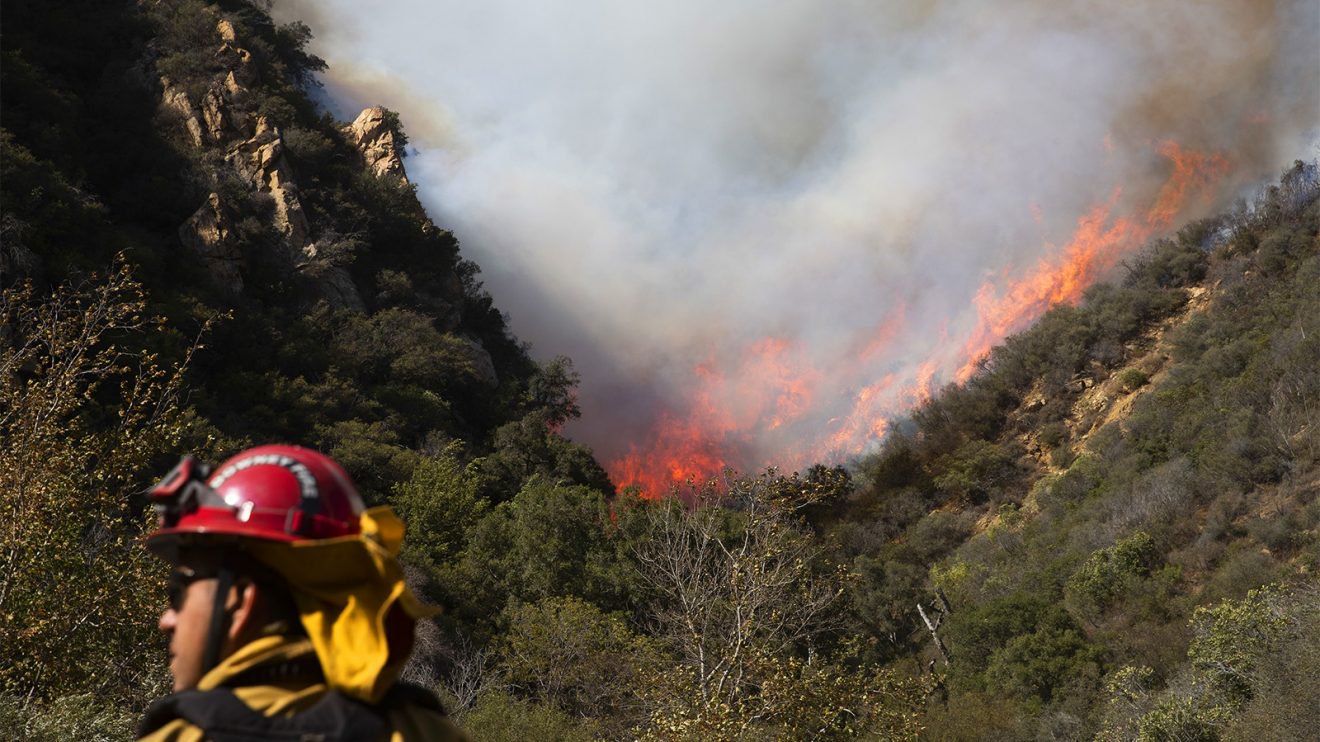
By: Cathleen Falsani
MALIBU, Calif. (RNS) — Two hours before the sun set over the Pacific Ocean on Nov. 8, the Rev. Joyce Stickney, rector of St. Aidan’s Episcopal Church in Malibu, received word about wildfires that had broken out 30 miles away in the hills above the Simi Valley.
Hot, dry Santa Ana winds were howling that day, which meant that a fire that began an hour away could pose a legitimate threat to seaside Malibu, where wildfires are a perennial concern — the 1993 Old Topanga blaze raged for 10 days, destroying more than 350 homes and leaving three people dead.
So Stickney headed for St. Aidan’s sanctuary where, from its hillside perch a few hundred yards above the Pacific Coast Highway, with the Santa Monica Mountains in the distance to the east, she prayed for her city of about 13,000 souls.
By daybreak, Stickney opened the front door of St. Aidan’s rectory, where she lives with her husband and their seven children, to see thick plumes of smoke moving in their direction. Overnight the Woolsey Fire had jumped 101 Freeway and barreled west, bearing down on Malibu as it raced toward the ocean.
Stickney, who has been rector of St. Aidan’s for 13 years, rousted children from bed and began packing in a hurry, knowing that a mandatory evacuation of Malibu would mean the main route into and out of town — the famed coast highway — would become gridlocked quickly, trapping motorists, potentially in the path of the fast-moving inferno, for hours.
She grabbed the church registers and a chalice from the altar before setting out with her family for a wholly uncertain future.
They took two cars — Stickney driving one, her 17-year-old daughter Grace driving the other — and headed north toward Oxnard, where the children’s babysitter lives, while thousands of their neighbors fled south toward Santa Monica. Stickney and five of their children (two are away at college) arrived at the babysitter’s mobile home where later that night they were joined by her husband, Paul, who had left for work on a television set at 4:30 a.m., before the smoke and chaos had descended.
On Nov. 19, 10 days after the wildfires erupted, the Woolsey Fire had burned nearly 97,000 acres, destroying 1,500 structures — many of them in Malibu — injuring three firefighters and killing three civilians. Reportedly, none of the city’s dozen or so houses of worship was lost in the fire, but three large Jewish camps were destroyed, and Rabbi Michael Schwartz of the Malibu Jewish Center & Synagogue lost his home.
“For the first 24 hours after the fires, before we could get into Malibu to see it with our own eyes, we had begun to go the place of ‘Everything’s gone,’” Stickney said. “I don’t know how many other [clergy] live and work and have their kids in school at the same place.”
Waiting for news was a test of faith and her mettle, but when it came, it was a relief.
Parish administrator Nathaniel Sherrill, whose home in Newbury Park, Calif., was close enough to the fire’s origin that it already had been evacuated, joined her to recite an evening meditation from the Anglican Book of Common Prayer:
“Almighty God, we give you thanks for surrounding us, as daylight fades, with the brightness of the vesper light….”
“That is the one thing that religion definitely does give us, whether you’re spiritual or religious or not — we’ve got prayers for times like these,” Stickney told Religion News Service late last week. “They’re words that are timeless and walk us through the motions: ‘Thank you, God, for the vesper light. The world is still turning and soon it’ll be nighttime; give us peace’ — the ancient wisdom of our tradition, our prayers.”

















